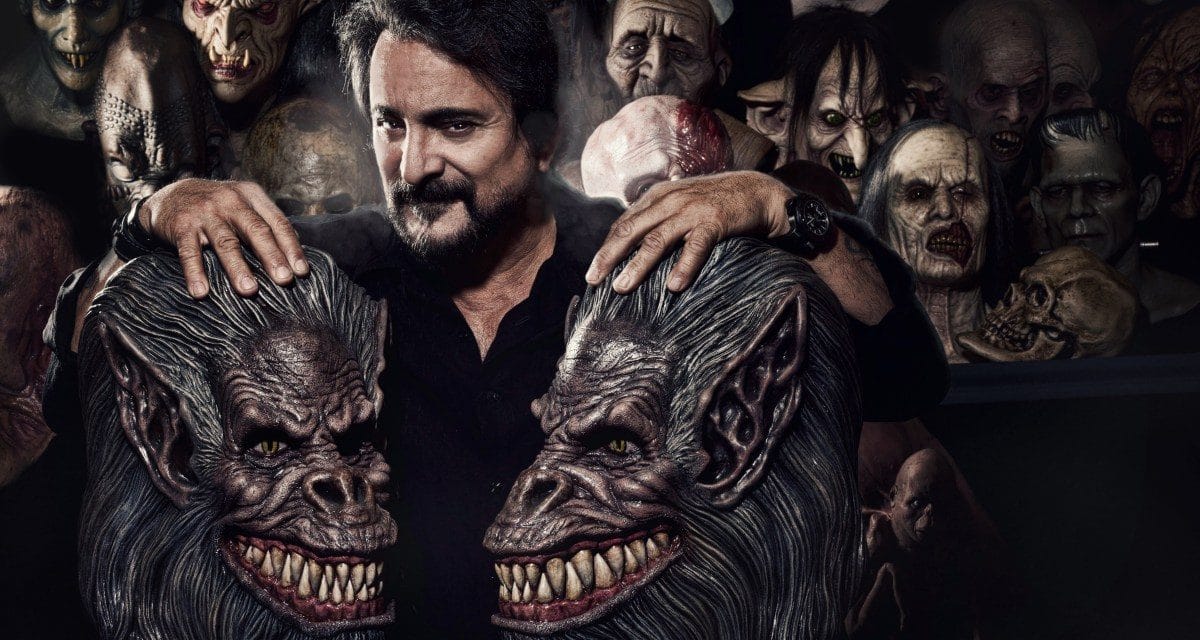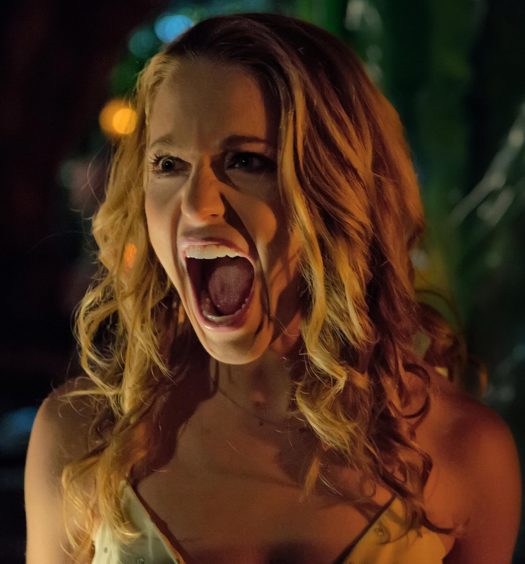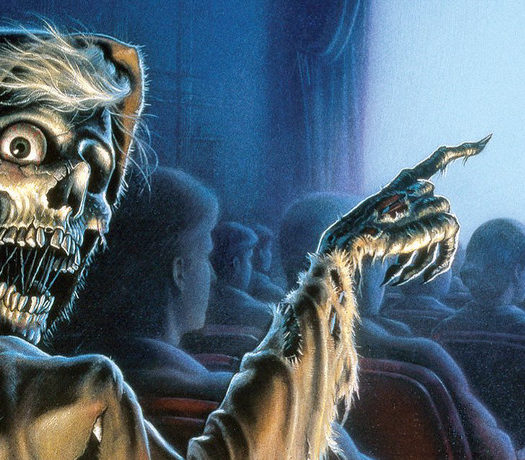A great man once told me, “your point of view is based on your experience”. I am still trying to come up with the proper word to describe my point of view the day I was invited to observe the set and filming of Shudder’s upcoming Creepshow continuation. I have not only been a die hard horror fan my entire life, but also a child of practical artistry and a lifelong Stephen King devotee. You can only imagine how incredible it was for me to see the original Creepshow props, watch the production of some spectacular segments, and interact with the cast and crew, some of which contributed greatly to my love of horror.
One man in particular elevated that experience for me purely as a fan. Tom Savini, the one who started it all in the effects industry, the man I only saw and admired in countless cameos, on documentaries, through his work, Instagram, basically everywhere beyond my average hometown, sat across a small table from me and talked for an hour. I watched him work his magic for well over eight hours after that. It’s obvious what my point of view was through this experience, but I figured I’d relay more of the wonderful things Mr. Savini had to share about Creepshow and his legendary career.
When asked about the Creepshow segments aside from his own and how much of the effects were practical, Savini reminisces.
He comments, “Everything. My piece has a monster that actually comes and picks up one of the stunt guys. We’re going to wiggle him before he gets tossed out of the frame, we’re gonna break his spine, so that might be CGI, but with the nudging and dragging that’s all a silicone baby with a foam puppet. We’ll shoot that at KNB after the shoot here is over.”
With Greg Nicotero organizing the stories and advising to keep from repetition occurring, Savini looks forward to watching the other segments with fresh eyes:
“I don’t know the other stories, I don’t want to know. I want to be surprised when I watch this. I’ve known Greg since he was 14, he was a kid. He visited the set of Dawn of the Dead. He was my assistant on a couple of movies that I did. I said to him, he mentions me at award ceremonies and things still, we’re in his hot tub and I said, “Greg, you would have all of this if you had never even had met me.” Because he’s a hard worker. He’s incredible. He’s going to start The Walking Dead again after this. It exhausts me just thinking about it. So we’re in this hot tub and I said, “There’s two words for why this is all happening for you: you’re good. And he absolutely is. You know he was this little kid, he was “gut boy”. He handled the pig intestines for us and brought them over to us on set. Unfortunately they had unplugged the refrigerator while we were in Florida for three weeks. The stench was awful and we had to use them. You can’t go buy new pig intestines at 3:00 in the morning, so the stench was unbelievable.”

I never use a fake head, it has to be a real person. A real person can emote, it’s honest and it’s real. You look at a fake head in the movie longer than three seconds and you know it’s fake.
Horror TV, on the other hand, has a more profound effect on the artist. Savini continued sharing his thoughts on movie magic and our own individual ability to create worlds.
He muses, “For me, horror TV was The Twilight Zone and Thriller Hosted by Boris Karloff and One Step Beyond. Those are things that I went to bed covering myself with a mattress so that the monsters wouldn’t get me. That was when I was a kid, that’s when you are the most vulnerable. I wish I could see a movie again through the eyes of a 9-year old child because that is when it was all real for me. Frankenstein was real, The Wolfman and The Mummy, that was all real to me. That’s what scared you. They hardly showed anything. It all happens behind doors. With Jacques Tourneur’s The Leopard Man, when that leopard is chasing the girls you hear a pounding on the door and the mother yells “Did you get the flour?” and you’re screaming. Then they show the bottom of the door and blood starts coming out from under it. Boy, that stuck with me as a kid more than seeing a special effect.
That magic is destroyed for you if you’re a movie fan and want to work on movies as soon as you get behind the scenes. The magic of believing everything is really happening is over. A new magic takes over, which is the magic of creativity, and that’s okay, but I still miss that feeling in particular.
That’s still alive, that magic. There are movies where you’re not thinking of camera angles and what’s the decision the director is making with the lighting. That exists within two movies: The Exorcist and Alien. Those two movies scared me and I never thought about a camera setup or anything. I was in the story. I was raised as a Catholic and that is brainwashed into us, so it hit something in us deeper than non-Catholics. I’ve spoken to a lot of non-Catholics about The Exorcist, but they think it’s silly. Some people say that movie was silly, but to us, even though we may not believe in it now, it was ingrained in us as kids with the nuns and the priests so that hit us.
Alien was a haunted house in space. It was just unbelievable and proves an important point. If SyFy called me today and wanted me to direct a movie for them the rule is that you’ve got to show the monster in the first five minutes and you can’t do a night shoot. If it’s a night shoot then it has to be very bright. Well, that violates the rules. You don’t show the monster in the first five minutes. As soon as you show the monster it’s over.
The audience sees it and if it doesn’t scare them then it’s never going to scare them. With Alien you never saw that monster until the last frame when he was blown away from the ship. You saw bits and pieces of it and you created the rest of him in your head. That always seems the best to me. That’s why the old movies were so great. You created in your head what was going on behind the doors when you heard screams and the leopard growling. I think we’re all special effects people in our own minds.”
Savini pauses before continuing, “Look at your dreams. This, to me, is the biggest deal that people don’t give enough thought to. When you’re dreaming your thoughts are creating a world just as solid as this table in front of me. You can taste food and see colors. You’re not dropped in a scenario, you created the whole interior dwelling, you create all of that. Where does that come from? It comes from the special effects. Your point of view is based on your experience and everything you’ve ever seen. You can recreate it all in your dreams.
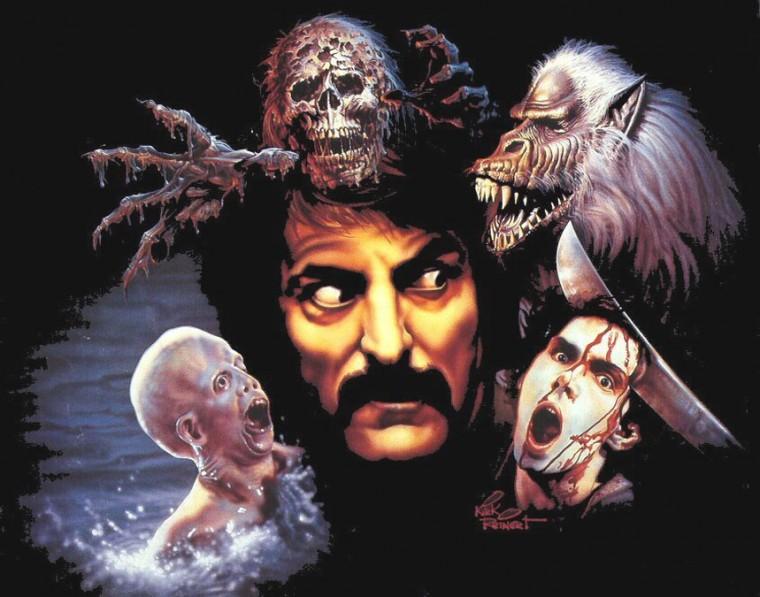
It’s alive. It’s on the wire. I’m on the wire right now and that’s exciting. I can compare it to fireworks. You have that feeling all the time.
You are fucking god when you’re dreaming. Your intelligence is creating a scenario, an elaborate scenario, a labyrinth of stuff. You gave that life. You’re laying in bed seeing without using your eyes, you’re hearing stuff that doesn’t exist, you’re creating this solid world. What’s the difference between us right here alive and in my dreams?
I also believe in reincarnation only because of my first memories and that is when I was less than a year old. I felt like I had just come from someplace, but I was super intelligent. I knew everything until my dad chased me down the steps because I had crapped in my pants when I became the kid I’m supposed to be, but before that I thought I had just come from some other place. I felt super aware and then I became this kid. Just like when you wake up from a dream, the first thing that happens is you forget the dream. You’re programmed to forget the dream… I think we’re programmed to do it.”
Can Savini credit any of his inventions to past dreams?
He thinks for a moment before responding with, “One or two. The reverse machete in Day of the Dead. That was something I created in a dream. Here’s the deal, and it’s something I even teach my students, if you’re a special makeup effects student like at my school your mindset should be “What do I need to see to make me believe that what I’m seeing is really happening?”. That translates into “What do I want to show people to make them believe that?”. This is just simply what a magician does. A magician makes you look here while he’s pulling a wad of flowers out of his ass. He misdirected you so he could do the trick. He also has mechanical devices you’re not aware of and that’s what special effects are: mechanical devices.
What do I need to see to make a machete go into a guy’s head? How can I do that? It’s got to be a real person. I never use a fake head, it has to be a real person. A real person can emote, it’s honest and it’s real. You look at a fake head in the movie longer than three seconds and you know it’s fake. Think of Arnold Schwarzenegger in the mirror in The Terminator. That was fake. In Poltergeist when the guy tears his face apart, you’ve got to stare at that longer than three seconds, so it’s fake. I like to use the real person because I can stare at you all day and you’re never gonna look fake. Except Kevin Yagher’s heads for the movie Sleepy Hollow, you could stare at those all day. They were exquisite. They were extremely well done, but mostly fake.
When I’m creating the machete, I got to cut a groove on the machete so when it’s on him it looks like it’s in him. Then we just pull it out and do it in reverse. That was in a dream. I thought like that and now they manufacture those. People will just take it because they saw it in a movie.”
We’ve seen a wave of horror television. Will Creepshow fit in with this explosion of anthology formats? What role will Savini, who previously played The Creep himself, have in front of the lens this time?
Savini confidently answers,”It’s going to lead the way, it has a history… I was just showing my friend that’s visiting all the new artwork from Creepshow, not official artwork just the stuff from the fans, the fan art. I think they’ll be chomping at the bit for this thing. People who love that movie, and there are a lot of them still, will love this because they’re getting the movie in 12 episodes… I think it’ll be what people are waiting for.”
Accompanied by his lovely wife as well as his friend and cult horror actor, Marty Schiff on set, Savini shakes his head “I’m not even doing a cameo. I said to Greg, “I want to be a woman’s ex-husband who died, you see it through photographs on a windowsill. He said, ‘No, no. You’re too old to be married to a 34 year old’” and I’m sitting next to my 35-year old wife and he knows her!
My friend Marty is here and he and I were the garbage men at the end of the original one. Greg was saying we should have a scene because there’s no cameos. They were talking about putting one of my tattoos in as a cameo, but that’s not happening. I was going to be one of the Nazis because they’re in gas masks. We’d be like Daniel Craig playing a storm trooper, but we’re not even doing that.”
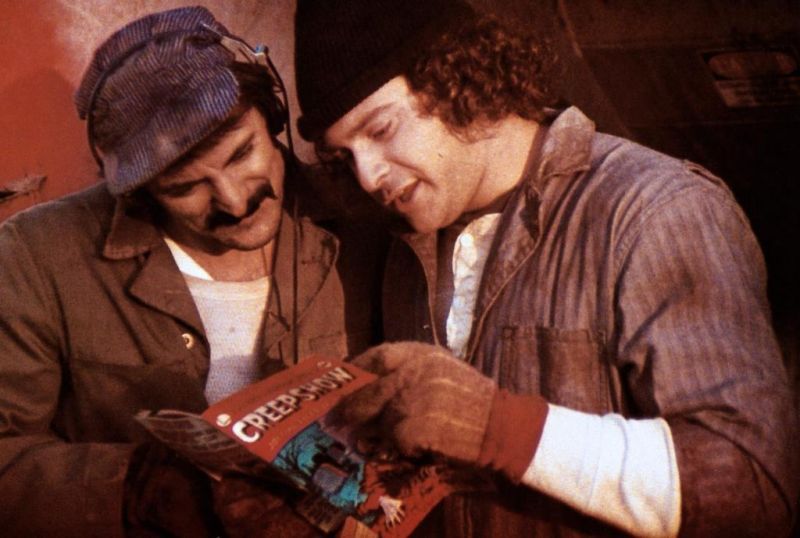
None of us would have a career without George. For me, if there wasn’t Dawn of the Dead I wouldn’t have gotten Friday The 13th and that one-two punch is what catapulted my career.
Savini did not choose his segment, “By The Silver Water of Lake Champlain”, an adaptation of a story written by Joe Hill, but the topic does have a memorable connection to his earlier work.
Savini explains, “The first segment Greg offered me was “The Monkey’s Paw” segment. John Harrison wound up directing that one. This was pretty funny. I was set to direct Tales From The Dark Side: The Movie. Greg talked me out of it a long time ago, so John Harrison directed it. I remember Greg videotaping me turning down the producers for Tales From The Dark Side: The Movie and they had sent me like 25 grand as a non-refundable token of peace. They were onboard hoping I’d direct this movie, but my agent had offered me a Stephen King project called Graveyard Shift. Greg was like “Tom, it’s Tales From The Dark Side versus Stephen King’s Graveyard Shift”. So I agreed and did it and Greg wound up doing Tales From The Dark Side’s effects. I have no agent and the studio, New World Pictures, went belly up so Graveyard Shift didn’t happen.
Greg sent me this script and I asked him if all the endings to all the episodes were so ambiguous. There was no ending, no resolve to them. He said something like, “We can give you an episode next season if you like”. I said “No, no let me try to work with this”. He had some writers redo it and what they came back with was great, there were great conversations so it evolved into something that, to me, really has heart… this episode is sweet and sad and heroic. It’s kind of a ‘feel good’ episode.”
Would Savini return for a second season of Shudder’s Creepshow? His answer is just as good as you’d expect it to be.
Enthusiastically, Savini immediately replies, “Oh yeah, absolutely. This is intoxicating. Before coming here, my big decision of the day was “Are we going to Whole Foods today?” Now it’s like a real decision. I never stop thinking of this. When my head hits the pillow at night I’m still staging stuff. When I wake up I’m staging stuff for hours before I go bed. It’s alive. It’s on the wire. I’m on the wire right now and that’s exciting. I can compare it to fireworks. You have that feeling all the time. I’m 72, I have my school, I don’t have to do anything really, but when I first left this set I was thinking “I can’t wait to get back there in the morning”. It’s just so much fun. I was thinking to myself “Man, this is your life.”
There are whole different minds that I possess now, that I’m walking around with. I’m totally immersed in making this story full of detail and making it scary and then keeping Greg’s notes in mind. When I’m done shooting a scene I put another lens on and go for the close up. Rule number one of making this film was “What’s my cut away? If I’m shooting something, what am I going to? Always have a cut away”.
I’m not sure that’s what Greg does, but he directs how many, like four, episodes of The Walking Dead? He’s a seasoned director and he’s well aware of it, but like I said, your point of view is based on your experiences. He’s got a great point of view, but you must also learn from the masters. I completely directed this movie on paper first only because that’s what Hitchcock did. You can make mistakes and it doesn’t cost anything. It was boring for him to make the movie because he already made it on paper.
I go home with my iPad and shoot my scenes so tomorrow when the cameraman asks “What’s next?” I have it ready to go for one after another because we only have three days to shoot this thing. It’s only 20 minutes, but every minute counts.”
George A. Romero is obviously a huge influence when it comes to this continuation. With advanced CGI versus the practical influence of the late director, Savini appreciates new technological tools yet remains aware of their limits.
Savini states, “None of us would have a career without George. For me, if there wasn’t Dawn of the Dead I wouldn’t have gotten Friday The 13th and that one-two punch is what catapulted my career. I mean the 80’s was the splatter decade and I was the “King of Splatter”, the “Wizard of Gore”. I’ve been called all those because of the 80’s with The Burning, The Prowler, Friday The 13th, Day of the Dead. That was the heyday of stuff that was happening right in front of you. This was before CGI. I love CGI when it’s done well. I wish I would’ve had it back then to solve some problems, but it’s kind of an economic thing. I think the first episode of The Walking Dead from a few seasons ago where the people are laid over the trough getting beheaded, they didn’t even put appliances on those people. There were just tubes on the neck to shoot blood up. Visual effects just erased it a few weeks later, which is an economic decision there. For me, if I had to tear the guy in half again like in Day of the Dead that takes five to six hours, but now we can do that with no blood, just CGI blood. You can do it again over and over instantly with as many takes as you like.
They haven’t mastered certain things, but like I said, I like it when it’s done well. It’s just a tool in your toolkit to use. CGI is part of a toolbox that we can use to just make it visually more exciting. If I were to turn you into a zombie I can’t subtract from you, I can only add to you. With CGI I can subtract all I want, I can widdle you down to a skeleton, so it’s a great tool.”
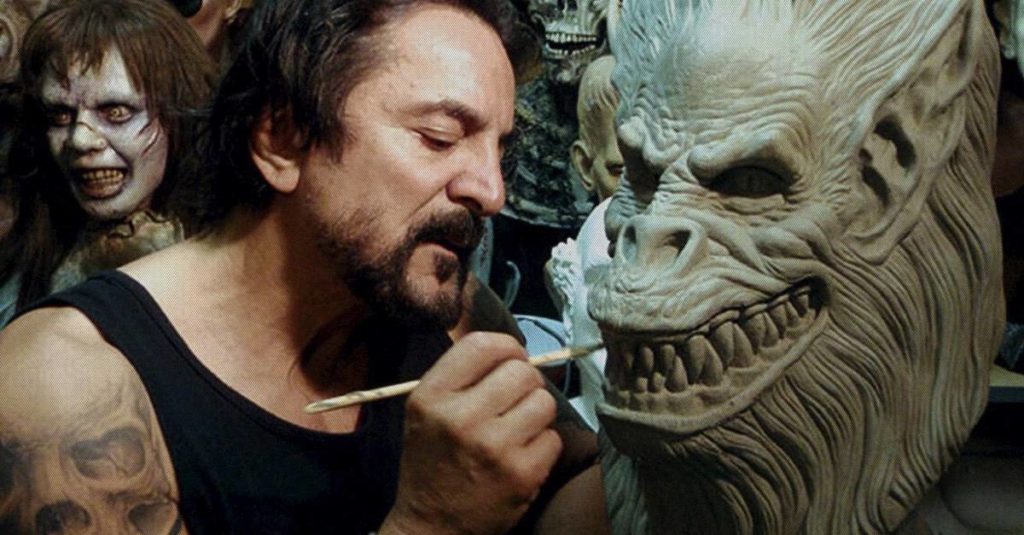
I think we’re all special effects people in our own minds.
What does Savini think when it comes to the future of practical effects? What does the man who’s made a living off of building the industry say about the new generation of CGI?
“When you look at The Evil Dead, they were bragging that there was no CGI. It’s all practical. J.J. Abrams with the new Star Wars movie did a lot of practical stuff. Greg and I are firm believers of practical effects, but every now and then you need to take that thing out of the tool box and use it. That’s all my school teaches, is practical effects. There are famous makeup artists who say they’ve quit the business because of CGI, but there’s still a call for what we do, there’s still a call for the practical stuff even with low budget films, independent films, and with old-timers who don’t want that feeling. Because something is CGI, you have to pretend it’s there. It’s not really there. If you watch the werewolf transformation in An American Werewolf in London, that’s happening right in front of you. All my stuff happened right in front of you. There’s a feeling you get from that. It’s like Steven Spielberg says of his son Max who’s 12 years old: if he’s watching a movie and what he’s watching is impossible, then it has to be CGI.
That’s the scary thing. We’re training new generations to accept all the CGI stuff. Us old-timers have a collective dislike of it. When I first saw Jurassic Park I didn’t see any dinosaurs. I saw a guy sitting at a computer and it pissed me off. I wanted to get into the movie and enjoy it, so the next time I saw it I had to change my mindset. No matter what I see in the foreground or the background, it’s really there. Then I enjoyed the hell of that movie, but I had to make that mindset change. People don’t want to do that. A lot of people don’t want to put the effort into making that mind change.
Savini’s Pennsylvania-based Special Make-Up Effects Program plants practical-minded students all over the world, even a few coincidental cities…
“I heard that one of the teachers from my school was in Atlanta. My assistant told me his name is Eric Molinari. I said, “Well I hope I run into him” and he shows up to paint the monster. My students are everywhere. Every time I go to a mass company or something people tell me they went to my school a year or so. They’re everywhere. “
Who gets Tom Savini’s seal of approval nowadays when it comes to horror movies? Hardly anyone.
Savini asks, “Has there been any good horror movies lately? I’m serious. Get Out was great. Hereditary bugged the shit out of me. I don’t buy the whole cult thing at the end. There were some scary moments in it, but I didn’t know why you would be scared. Why did that guy catch fire in front of the fireplace? You know, why am I seeing this? I was constantly asking myself, “Why am I? What’s this leading up to?” and then I didn’t buy the premise. Everybody was touting about Hereditary. I couldn’t wait to see it. Again, very scary to a point, but then what? What does that mean? What happens 10 minutes after the movie is over? What happens to those people and the kid? That was my first thought, it was “Okay, now what?”. There can’t be anything. It was a setup to be scary and then it didn’t make any sense.”
When it comes to hard and fast rules for horror, Savini is confident in his direct response. Aside from “Don’t show the monster”, the artist, actor, director, and teacher is happy to educate anyone who wants to apply a decent scare to their film.
Savini instantly explains, “Anybody can jump up and go “Boo!” fast for three seconds and they do it constantly, even in big budget movies. Like in The Wolfman, I love The Wolfman, but it has the birds flying out of the box, there’s the cat jumping, and other things like that. These are chair jumpers. That’s what we call them, “chair jumpers” and those scares last for a couple of seconds. The best scares come from suspense.
You can draw that out. For example, there’s a room with a door on one side and another door on the other. You show the monster behind one door or the psycho or the tentacle creature or the bomb or whatever it is, you show behind that door. Then the character walks in the other door. As the character walks in the scare has started. You can’t wait to get to that one door because you know what’s back there and it’s only because we’ve shown it to you. If you’re a good director and a smart one, you slow the character down. The phone rings and the whole time they’re on the phone you’re thinking “Get to the door! Get to that goddamn door!”
We want to be scared. We want to see what’s going to happen. When they hang up and you slow them down again. If you’re a good director you don’t draw this out too long because there’s a point where the audience gives up and says, “I don’t give a shit”. If you time it right, you’ve got the build up to the scare. It’s not just three seconds, it’s 17 to 20 seconds.
When they do go and open the door there’s nothing there and the audience goes, “Oh…” and THAT’S when the monster shows themselves. When you’ve scared people or you give them that reaction when the thing jumps up you catch them unaware. You built up to that. So that, to me, is the main role, that the scares have to be suspenseful.”
Join Tom Savini, Greg Nicotero, and loads of other dedicated horror creators as they bring The Creep back from the dead. The Creepshow anthology will continue exclusively through Shudder on September 26th.

